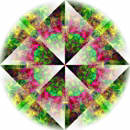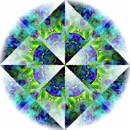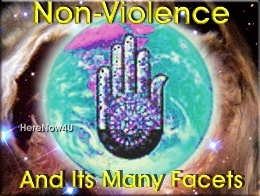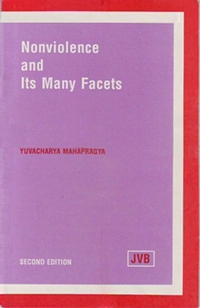
Man is eager to live and afraid to die. Most problems owe themselves to this fact. The fear of death might be reckoned as a prime fear but the most primeval and basic fear is that of expectation being defeated, or more specifically, that of losing what one delusively thinks one owns (the delusion 'This is mine'). Fear of losing what one is attached to (the family, for example) gives birth to the fear of death and therefore the former is the most basic fear. Death is feared, Another words, not per se but because as a result of it we lose all those things and people we are attached to. One is attached to the body and is afraid to lose it. The delusion regarding the body can be got rid of through the practice of kayotsarg (total relaxation of the body), for it results in loosening and ultimately eliminating the body's hold over the mind, without embracing death. Yet kayostsarg induce a death-like state in which all thoughts, feeling and desires vanish and the body lies still. Having faced death one remains no longer afraid of it. Thus through kayotsarg one can conquer the fear of death and thus rid oneself of the tension and oppressive feeling accompanying the fear. Here it is worth remembering that fear resides within and not outside us. External fear is mere fiction. If we succeed in cultivating fearlessness no incident, no external circumstances can strike fear in us.

There is an incident related to Mahatma Gandhi's life. Once during one of his marches through the countryside he encountered a procession of people singing and dancing to the beats of a drum and carrying a goat for sacrificing in a temple dedicated to a goddess. Gandhiji walked ahead of them and sat down obstructing their way to the temple. The people asked him to get out of their way. He told them that if they were bent upon offering a sacrifice to the goddess they might as well sacrifice him and leave the goat alone. Surely the goddess would prefer human to animal sacrifice! The people felt ashamed and gave up the practice of offering sacrifices. Gandhiji could do so only because he was not afraid of death even though the circumstances were dreadful. It shows how nothing in the outer world can strike fear in those who have succeeded in building a consciousness free from fear. On the other hand if the mind is given to fear, a thousand fears will assail it even when no cause exists. To conquer fear one has to conquer the attachment to things and people-the delusion 'This is mine'.

While talking of non-violence we should not chase shadows. We should remember that of the three things - violence, fear, false attachment - it is the last that has to be tackled first. It is the delusion of attachment that causes fear and which in turn results in violence. If it had not been for fear no weapons would have been invented. Fear of the enemy leads to the unending race for more and more deadly weapon systems and the degree and possibility of violence increase correspondingly. Today the whole world is reeling with fear. Nations are afraid of one another and so are different sections of society. Not until people become fearless can non-violence be firmly established, and fearlessness is possible only when people learn to free themselves from the delusion of attachment.

There are quite a few people now who are interested in building a non-violent society. In order to be able to do so two problems have to be solved first. They are the centralization of power and the concentration of wealth in a few hands. So long as these two evils continue it is in vain to contemplate the possibility of a non-violent society. So the first thing to do is to find the ways of decentralizing and distributing wealth and power in society. The tendency to cling to power and to refuse to share wealth has to be changed. This will merely mean accepting truth and rejecting falsehood. However, mere preaching cannot achieve the desired result. Application is of vital importance and like charity it should begin at home. One should start applying good things to one's own life. This first step will be kayotsarg, for it is the basis of Preksha Meditation. Until one is able to stabilize and relax one's body, tension in the body will persist and non-violence cannot take root in a mind and body full of tension. This small experiment of practising kayotsarg for twenty minutes daily will enable us to expel fear and violence from the mind. Then we should take the second step of practising non-violence within the family. If we succeed there, we should take the third step of extending non-violence to the neighbourhood. Next it should encompass the nation and finally the whole world. There is no use talking glibly of world peace and international brotherhood unless we have learn to apply the concepts of peace and brotherhood in the family, neighbourhood and the nation. It is small beginnings that lead on to greater ventures.

I would now like to conclude by saying that what we want Is to build a healthy, non-violent society wherein peace and fearlessness prevail and where every individual has equal opportunities and rights, but that such a consummation is possible only if we learn to limit and control selfishness and attachment. This is possible through the practice of Preksha Meditation.

 Acharya Mahaprajna
Acharya Mahaprajna

